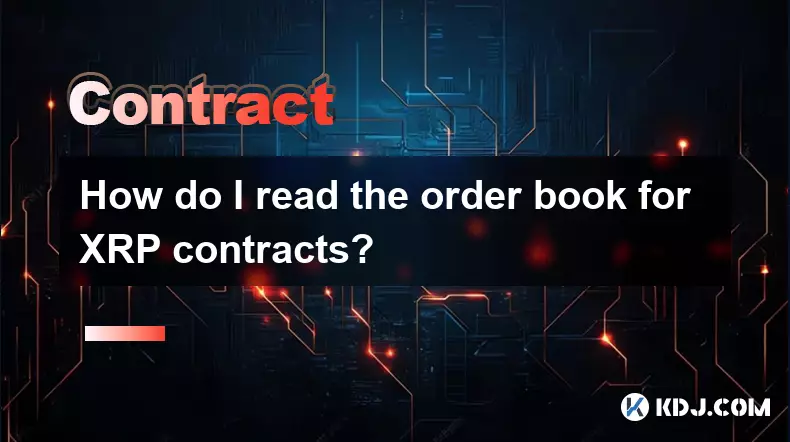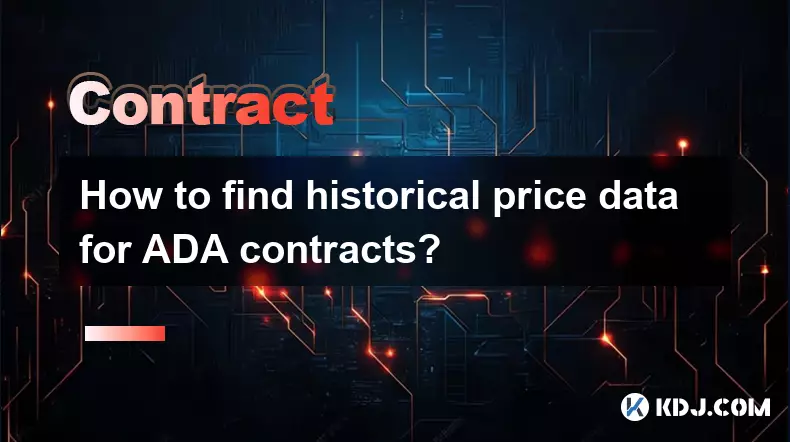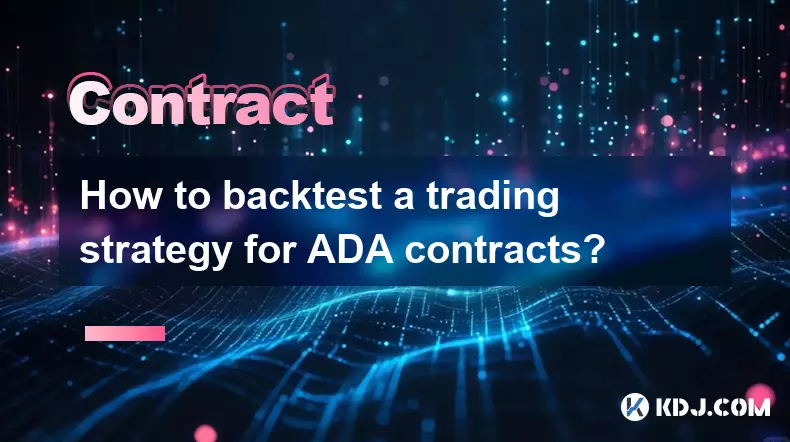-
 bitcoin
bitcoin $108309.944805 USD
-1.81% -
 ethereum
ethereum $3861.653445 USD
-2.57% -
 tether
tether $1.000476 USD
0.02% -
 bnb
bnb $1064.809647 USD
-3.07% -
 xrp
xrp $2.422923 USD
-2.29% -
 solana
solana $186.552328 USD
-0.93% -
 usd-coin
usd-coin $0.999917 USD
0.00% -
 tron
tron $0.322438 USD
-0.01% -
 dogecoin
dogecoin $0.194315 USD
-2.57% -
 cardano
cardano $0.642133 USD
-3.06% -
 chainlink
chainlink $17.657259 USD
-6.17% -
 hyperliquid
hyperliquid $35.120261 USD
-7.45% -
 ethena-usde
ethena-usde $0.999614 USD
0.03% -
 stellar
stellar $0.312748 USD
-3.27% -
 bitcoin-cash
bitcoin-cash $480.377391 USD
0.23%
How do I read the order book for XRP contracts?
The XRP order book reveals real-time buy/sell interest, with bid-ask spreads, liquidity depth, and order imbalances helping traders gauge short-term price direction and market sentiment.
Oct 18, 2025 at 04:55 pm

Understanding the Structure of an Order Book for XRP Contracts
1. The order book displays a real-time list of buy and sell orders for XRP futures or perpetual contracts on a trading platform. It is divided into two main sections: bids and asks. Bids represent the prices at which traders are willing to buy XRP, while asks show the prices at which they are willing to sell.
2. Each side of the order book lists price levels alongside the corresponding contract size or quantity. Higher bids appear at the top of the buy side, while lower asks sit at the top of the sell side. The gap between the highest bid and the lowest ask is known as the spread.
3. Market depth is visualized through a graphical representation in some platforms, showing cumulative volume at different price points. A thick order book with large volumes on both sides suggests strong liquidity and potential resistance or support zones.
4. Price levels with significantly large orders can act as magnets or barriers. These are often referred to as 'walls' — a large bid wall may prevent price from falling further, while a massive ask wall might stall upward momentum.
5. Traders monitor how quickly orders are filled or canceled. Rapid cancellations near the top of the book can signal spoofing, where false liquidity is displayed to manipulate market perception.
Interpreting Liquidity and Market Sentiment
1. High liquidity in the XRP contract order book means tight spreads and minimal slippage during trades. Platforms like Binance or Bybit show depth charts that reflect how much volume is available within small price ranges.
2. A deep bid side with increasing volume indicates strong buying interest, potentially signaling bullish sentiment. Conversely, expanding ask volume suggests sellers are dominating, which could precede downward movement.
3. Sudden surges in either bids or asks can reveal short-term shifts in control. For example, a cluster of large buy orders appearing below the current price may suggest institutional accumulation or stop-loss hunting by exchanges.
4. The absence of orders in certain price zones creates vacuum areas. When price enters these regions, it can accelerate rapidly due to lack of counter-liquidity, leading to sharp pumps or dumps.
5. Time & Sales data, when paired with the order book, helps confirm whether large trades are executed at market or limit prices, offering insight into aggressive versus passive execution.
Using Order Flow to Predict Short-Term Movements
1. Watching the rate at which bids get absorbed gives clues about selling pressure. If large buy orders vanish quickly without moving price up, it may mean strong distribution is occurring.
2. When asks are consistently removed faster than bids, it often precedes upward breakouts, especially if accompanied by increasing trade volume. This imbalance shows demand overpowering supply.
3. Hidden orders, though not visible directly, can be inferred when price stalls near certain levels despite apparent thinness in the book. These may belong to iceberg orders used by whales to avoid revealing full position size.
4. Latency matters in high-frequency environments. Retail traders using standard interfaces may see delayed updates compared to co-located servers, resulting in perceived changes after actual execution.
5. Correlating order book dynamics with funding rates and open interest in XRP futures adds context. Rising open interest alongside growing bid depth supports new long positions forming, reinforcing trend validity.
Frequently Asked Questions
What does a red wall in the XRP order book indicate?A red wall refers to a large volume of sell orders stacked at a specific price level. It typically acts as resistance, indicating that many traders expect price to reverse downward upon reaching that point. Its presence may deter buyers unless there's sufficient momentum to overcome it.
Can I rely solely on the order book for trading decisions?While valuable, the order book should not be used alone. Manipulation tactics such as spoofing and layering are common in crypto markets. Combining order book analysis with candlestick patterns, volume profiles, and on-chain metrics improves accuracy.
Why do order book imbalances occur suddenly?Sudden imbalances arise from algorithmic trading bots, liquidation cascades, or whale activity. During high volatility events like news releases or exchange listings, automated systems react instantly, reshaping the book within milliseconds.
How do exchanges handle partial fills in XRP contracts?Exchanges process partial fills when only part of an order matches existing liquidity. For instance, a 10,000-contract buy order may fill 7,000 immediately against available asks and leave the remaining 3,000 in the book as a new bid until matched.
Disclaimer:info@kdj.com
The information provided is not trading advice. kdj.com does not assume any responsibility for any investments made based on the information provided in this article. Cryptocurrencies are highly volatile and it is highly recommended that you invest with caution after thorough research!
If you believe that the content used on this website infringes your copyright, please contact us immediately (info@kdj.com) and we will delete it promptly.
- Forward Industries & Solana: Navigating the Crypto Board Landscape
- 2025-10-23 07:10:16
- Melania Trump Memecoin Mania: A Fraud Scheme or Just Bad Luck?
- 2025-10-23 06:35:17
- BullZilla: The Meme Coin Roaring into October 2025
- 2025-10-23 06:56:12
- Coinbase, Binance, and the Crypto Exchange Landscape: A New Era of Collaboration?
- 2025-10-23 07:10:16
- State Police, Michael Jackson, and Leadership: A Bizarre Intersection?
- 2025-10-23 06:35:17
- Dogecoin's Price Drop: Is the Meme Coin on the Brink or Ready to Bounce?
- 2025-10-23 07:15:12
Related knowledge

What are quarterly vs. perpetual ADA contracts?
Oct 19,2025 at 08:55am
Understanding Quarterly and Perpetual ADA ContractsDerivatives trading in the cryptocurrency space has expanded rapidly, offering traders various inst...

How to find historical price data for ADA contracts?
Oct 18,2025 at 10:18pm
Understanding ADA and Its Market Data Availability1. Cardano’s native cryptocurrency, ADA, operates on a decentralized blockchain that supports smart ...

How to backtest a trading strategy for ADA contracts?
Oct 21,2025 at 02:37pm
Understanding the Basics of Backtesting ADA Contracts1. Backtesting a trading strategy for Cardano (ADA) contracts involves applying historical price ...

How to read the order book for ADA contracts effectively?
Oct 22,2025 at 06:37am
Understanding the Structure of the ADA Order Book1. The order book for ADA contracts displays a real-time list of buy and sell orders organized by pri...

How to hedge my spot Cardano portfolio with ADA contracts?
Oct 18,2025 at 05:36am
Hedging Your ADA Spot Holdings Using Derivatives1. Identify a reliable exchange that offers ADA futures or perpetual contracts. Exchanges like Binance...

How are the trading fees for ADA contracts calculated on Binance?
Oct 19,2025 at 03:18pm
Understanding ADA Futures Fee Structure on Binance1. Trading fees for ADA perpetual contracts on Binance are determined using a tiered system based on...

What are quarterly vs. perpetual ADA contracts?
Oct 19,2025 at 08:55am
Understanding Quarterly and Perpetual ADA ContractsDerivatives trading in the cryptocurrency space has expanded rapidly, offering traders various inst...

How to find historical price data for ADA contracts?
Oct 18,2025 at 10:18pm
Understanding ADA and Its Market Data Availability1. Cardano’s native cryptocurrency, ADA, operates on a decentralized blockchain that supports smart ...

How to backtest a trading strategy for ADA contracts?
Oct 21,2025 at 02:37pm
Understanding the Basics of Backtesting ADA Contracts1. Backtesting a trading strategy for Cardano (ADA) contracts involves applying historical price ...

How to read the order book for ADA contracts effectively?
Oct 22,2025 at 06:37am
Understanding the Structure of the ADA Order Book1. The order book for ADA contracts displays a real-time list of buy and sell orders organized by pri...

How to hedge my spot Cardano portfolio with ADA contracts?
Oct 18,2025 at 05:36am
Hedging Your ADA Spot Holdings Using Derivatives1. Identify a reliable exchange that offers ADA futures or perpetual contracts. Exchanges like Binance...

How are the trading fees for ADA contracts calculated on Binance?
Oct 19,2025 at 03:18pm
Understanding ADA Futures Fee Structure on Binance1. Trading fees for ADA perpetual contracts on Binance are determined using a tiered system based on...
See all articles










































































